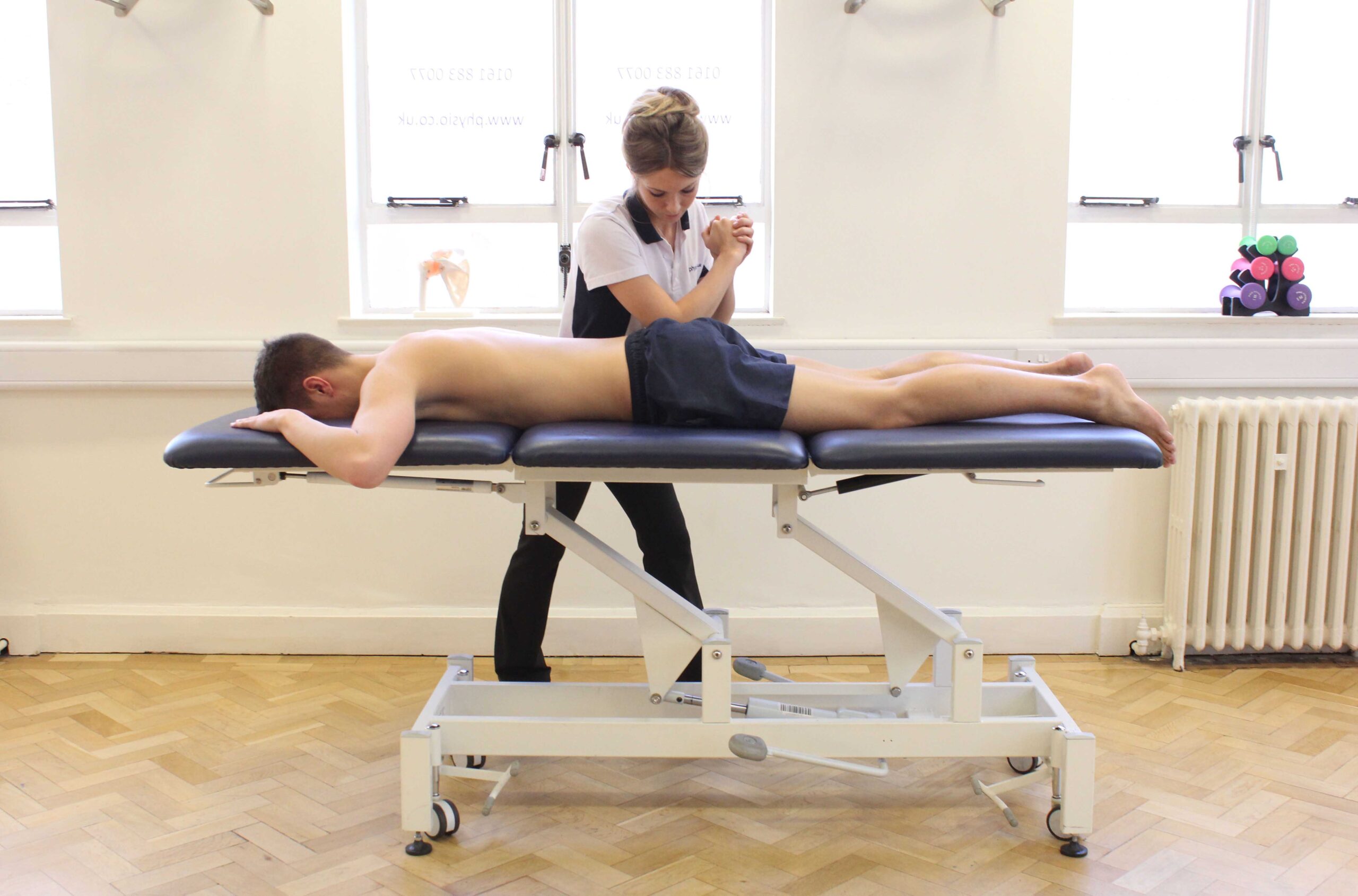In neuromuscular health, sciatica treatment garners attention due to its high occurrence and varied patient reactions to traditional and alternative therapies. Physical therapy, surgery, acupuncture, and yoga are highlighted for their merits in managing sciatica. However, finding an optimal treatment mix catering to individual needs for substantial relief and well-being improvement is essential. This necessitates further study.
Understanding Sciatica
Sciatica, a nerve disorder, affects many people due to irritation of the longest human nerve, the sciatic nerve. Originating from the lower back, through buttocks, and down the legs, it’s primarily caused by a slipped or herniated spinal disc. Other causes include spinal stenosis, a condition causing spinal cord space narrowing, and spondylolisthesis, a disorder of back bones sliding over each other.
Risk factors encompass age, as sciatica prevalence increases in older adults; obesity, which contributes to spinal changes; occupation, specifically those demanding heavy lifting or extended sitting leading to sciatic nerve pressure; and diabetes, a condition known for nerve damage.
Symptoms of Sciatica
Sciatica symptoms vary among individuals. Commonly, it presents as sciatica pain and related neurological signs. The severity and duration of these symptoms differ. This brief overview encapsulates how sciatica impacts people.
Recognizing Sciatica Pain
Sciatica, a condition distinguished by unique pain patterns starting from lower back or buttock and extending down one leg, necessitates early symptom recognition for effective treatment. Causes encompass herniated disc, spinal stenosis, or prolonged sitting, with severe cases inducing significant emotional distress, including depression, anxiety, and stress. Early identification aids in managing persistent pain and related emotional turmoil.
Related Neurological Symptoms
Recognizing sciatica pain and its associated neurological symptoms is critical for comprehensive treatment. Such symptoms may involve numbness, tingling, or weakness radiating along the sciatic nerve, often from the lower back to the buttock and down the leg’s rear side. Neuropathic nutrition, particularly B vitamins and omega-3 fatty acids, can support nerve health and lessen discomfort. Chronic pain from sciatica can also affect mental well-being, potentially leading to anxiety or depression. Therefore, a holistic approach encompassing both physical and psychological support is necessary for effective sciatica management.
Severity and Duration
Sciatica symptoms, varying from mild discomfort to severe pain, can last weeks to months. The severity and duration are influenced by factors including diet, with certain foods exacerbating or potentially reducing the pain. Emotional impacts, such as anxiety and depression due to chronic pain and limited mobility, also play a role. Treatment plans need to address both physical and emotional aspects of this condition.
Medical Diagnosis Procedures
The diagnosis of sciatica involves critical medical procedures. The initial understanding of the condition is important, followed by imaging tests for accurate identification. Each diagnostic method contributes significantly to the treatment plan. This ensures the optimization for NLP and semantic search engines by eliminating redundancy, prioritizing clarity and context, and incorporating relevant keywords.
Understanding Sciatica Diagnosis
Sciatica diagnosis involves a physical examination and patient’s medical history review. This ensures accurate diagnosis and debunks sciatica misconceptions. The examination includes a straight leg raising test to elicit sciatic pain and evaluate nerve function. The medical history review identifies risk factors such as age, obesity, occupation, prolonged sitting, and diabetes. These factors increase sciatica risk but do not assure its occurrence. This approach aids in creating an effective treatment plan addressing both symptoms and underlying sciatica causes.
Imaging Tests for Sciatica
Imaging tests like X-rays, MRI, and CT scans are crucial for diagnosing sciatica. They provide detailed images of the spinal cord, revealing issues such as herniated discs or bone spurs, common sciatica causes. This information guides the treatment plan, enabling the prescription of effective treatments, from conventional medicine to efficacious homeopathic remedies. Thus, comprehensive imaging tests are essential for effective sciatica management.
Importance of Early Treatment
Prompt treatment of sciatica symptoms can enhance prognosis, mitigate chronic pain risk, and prevent potential nerve damage. Early intervention also supports emotional wellbeing by reducing anxiety and depression risks linked to chronic pain. Notably, untreated sciatica can drastically impair mobility and quality of life.
Key benefits of early sciatica treatment include:
- Pain severity and duration reduction
- Permanent nerve damage prevention
- Mobility and life quality improvement
- Recurrence risk minimization
- Less reliance on invasive treatments
Each of these points underscores the crucial need for prompt sciatica treatment.
Physical Therapy for Sciatica
Physical therapy, a non-invasive treatment, serves crucially in sciatica management, offering specific exercises for pain reduction and mobility improvement. The therapy works by strengthening spine-supporting muscles and enhancing flexibility, thereby lessening sciatic nerve pressure and pain intensity.
Chronic pain from sciatica can cause depression, worsening physical discomfort and slowing recovery. Physical therapy indirectly benefits psychologic health as it helps patients gain control over pain and enhances life quality.
Physical therapists use a comprehensive approach, incorporating range-of-motion exercises, nerve gliding techniques, and heat and ice therapy for pain relief. They instruct patients on right posture and ergonomics to avert future sciatica episodes.
Medication Options
Medication management for sciatica varies from over-the-counter pain relievers to prescription drugs. Understanding these medications, their efficiency, and potential side effects is crucial. This text outlines these medication options for sciatica treatment, optimizing each word and sentence for NLP and semantic searches.
Over-the-Counter Pain Relievers
Sciatica sufferers often find temporary relief with over-the-counter pain relievers, serving as an initial treatment approach. These medications, less potent than prescription drugs, can still provide significant relief, particularly when used in conjunction with natural remedies and treatments such as massage.
Key over-the-counter options include:
- Acetaminophen: Reduces pain effectively.
- NSAIDs: Mitigates pain and inflammation.
- Aspirin: Chosen for mild to moderate pain relief.
- Ibuprofen: Treats both pain and inflammation.
- Naproxen: Offers long-lasting pain and inflammation relief.
Prescription Medications Overview
Severe sciatica often requires prescription medications for effective pain relief. These medications span various classes, including anti-seizure drugs, antidepressants, and opioids, each exhibiting distinct efficacy profiles. Potential side effects, such as drowsiness, nausea, or constipation, and harmful drug interactions may occur. Therefore, discussing medical history, current medication regimen, and lifestyle with a healthcare provider is crucial before initiating any new prescription for sciatica.
Surgical Treatments
In the sciatica treatment realm, surgical interventions come into play when conservative techniques fall short. These procedures, although intricate, can offer a decisive resolution to persistent sciatica, yet surgical risks must be considered.
Sciatica surgical treatments include:
- Microdiscectomy: A minor invasive method, entails removing a small bone segment over the nerve root or disc material for nerve unblocking and healing space.
- Laminectomy: A major invasive technique, it involves eliminating vertebrae’s roof for additional nerve space.
- Foraminotomy: This method broadens the nerve roots’ exit opening from the spinal canal, providing relief from nerve compression.
- Spinal fusion: In extreme scenarios, vertebrae fusion is performed for stability.
- Discectomy: This technique involves removing the entire disc causing nerve compression.
Each surgery has potential advantages and risks. The selection relies on the precise sciatica cause, the patient’s overall health, and personal preference with the ultimate aim of pain reduction and life quality improvement.
Lifestyle Changes and Sciatica
Key lifestyle changes can help mitigate sciatica symptoms. These include dietary modifications and stress management techniques.
Dietary changes can reduce inflammation, a primary cause of sciatica pain. A diet with fruits, vegetables, lean proteins, and whole grains enhances the body’s anti-inflammatory capabilities. Conversely, processed foods, sugars, and unhealthy fats may worsen inflammation and intensify sciatica symptoms. A registered dietitian can offer a personalized meal plan for sciatica.
Stress management is crucial for sciatica relief. Chronic stress triggers muscle tension and spasms, which exacerbate sciatica pain. Activities like mindfulness, meditation, and deep-breathing exercises can mitigate stress-induced physical responses, relieving pressure on the sciatic nerve and managing pain.
Benefits of Regular Exercise
Regular exercise manages and prevents sciatica by enhancing flexibility, strengthening muscles, improving blood circulation, managing pain, and preventing future flare-ups.
Key benefits are:
- Flexibility Enhancement: Stretching exercises mitigate sciatica pain by increasing muscle flexibility, preventing tightening.
- Muscle Strengthening: Strength training supports the spine by strengthening back muscles, reducing sciatic nerve pressure.
- Blood Circulation Improvement: Cardiovascular exercises boost blood flow, accelerating healing, and reducing inflammation in nerves and muscles.
- Pain Management: Regular exercise produces endorphins, natural painkillers, aiding sciatica pain management.
- Future Flare-Up Prevention: Consistent exercise and activity modifications help prevent sciatica recurrence.
Careful selection of exercise types and activity modifications prevent exacerbation of the condition. Regular exercise is an effective tool for sciatica management and prevention.
Alternative Therapies Explored
In sciatica symptom management, acupuncture and yoga therapy offer benefits. Acupuncture stimulates the body’s pain-killing chemicals, aids blood circulation, and relaxes muscles. This is achieved through the insertion of thin needles at certain body points, invoking the body’s self-healing response. This therapy often results in significant pain reduction and enhanced mobility.
Yoga therapy combines physical postures, breath control exercises, and meditation for health and wellness promotion. Specific yoga poses stretch and strengthen lower back muscles, providing sciatica pain relief. Mindfulness fostered by yoga assists in chronic pain management through relaxation and stress reduction.
Coping With Sciatica Pain
Effective sciatica pain management employs a multifaceted approach, including medical treatments and lifestyle changes. This involves physical remedies, mental health strategies, and diet adjustments.
Coping with sciatica discomfort can be tough, yet several strategies can alleviate pain and enhance life quality:
- Physical Activity: Yoga or pilates stretches muscles and eases sciatic nerve pressure.
- Heat and Cold Therapy: Alternating heat and cold diminishes inflammation and soothes muscles.
- Diet Modification: Anti-inflammatory foods like fruits, vegetables, and whole grains decrease inflammation.
- Weight Management: Maintaining a healthy weight reduces sciatic nerve pressure.
- Mindfulness Practices: Techniques such as meditation, deep-breathing, or cognitive-behavioral therapy manage mental health and decrease chronic pain-related stress.
Preventing Future Sciatica Issues
To mitigate future sciatica, consider a diet rich in omega-3 fatty acids, vitamins B and D, antioxidants, and hydration while limiting inflammatory foods and alcohol. Incorporate regular physical activity, specifically back-strengthening exercises such as swimming, cycling, and core workouts. Manage stress using techniques like yoga, meditation, deep breathing, and mindfulness. These measures support spine health, reduce nerve irritation, and decrease sciatica recurrence.
Frequently Asked Questions
Qué Alimentos Debería Evitar Si Tengo Ciática?
Evite azúcares procesados, lácteos y carnes rojas para manejar la ciática. Asegúrese de realizar ejercicio regularmente y tomar medicamentos para la ciática según las indicaciones médicas.
El Embarazo Puede Causar Problemas De Ciática?
Embarazo puede provocar ciática por presión sobre nervio ciático. Ejercicios prenatales, terapias alternativas alivian síntomas, mejoran calidad vida.
El Clima Puede Afectar Los Síntomas De La Ciática?
La ciática puede verse afectada por el clima estacional, particularmente el frío. Las actividades físicas recomendadas fortalecen la espalda y mejoran la flexibilidad, minimizando estos efectos.
Cómo Afecta La Ciática a La Calidad Del Sueño?
La ciática deteriora la calidad del sueño mediante la generación de dolor persistente e incomodidad. Posiciones de sueño incorrectas agudizan estos síntomas, induciendo estrés y ansiedad, lo que contribuye a la degradación del sueño.
Puede La Acupuntura Aliviar El Dolor De La Ciática?
La acupuntura alivia el dolor ciático, mejora la movilidad pero puede causar moretones temporales.



